Header: Riccardo De Vecchi
New Delft Blue is a pioneering project in the historic Dutch city of Delft, designed and 3D printed by Studio RAP. The project reinterprets the world-famous decorative qualities and design vocabulary of Delft Blue porcelain. By fusing 3D clay printing, computational design, and artisanal glazing, New Delft Blue hopes to unfold the new architectural potential of ceramic ornamentation in the 21st century.
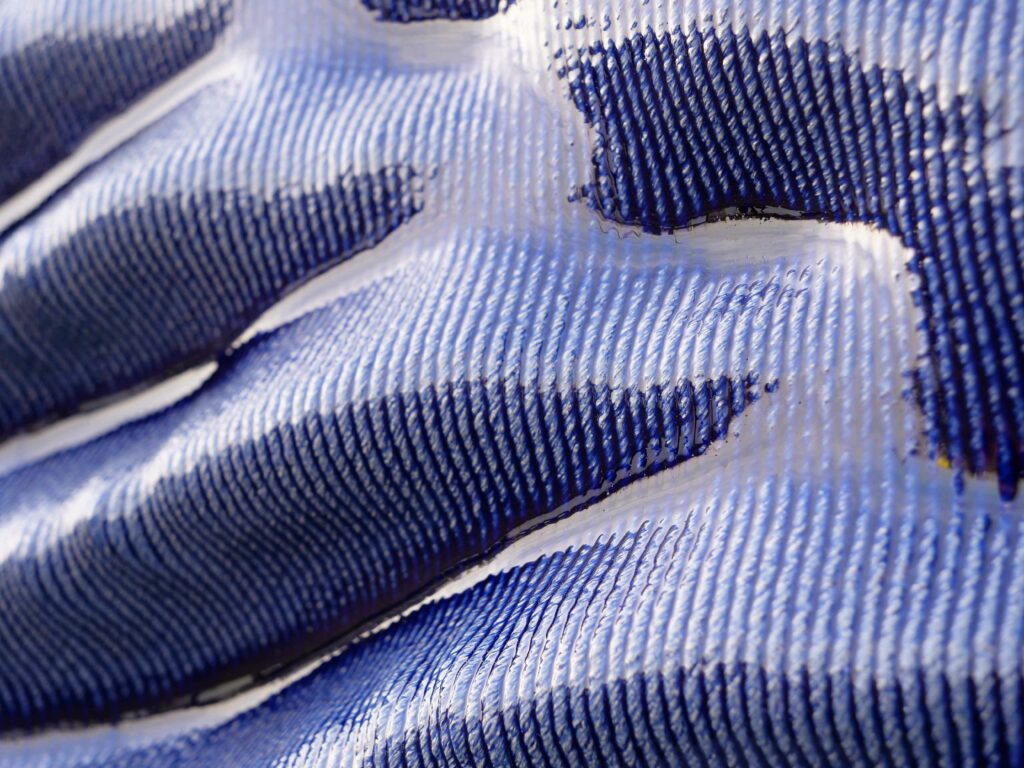
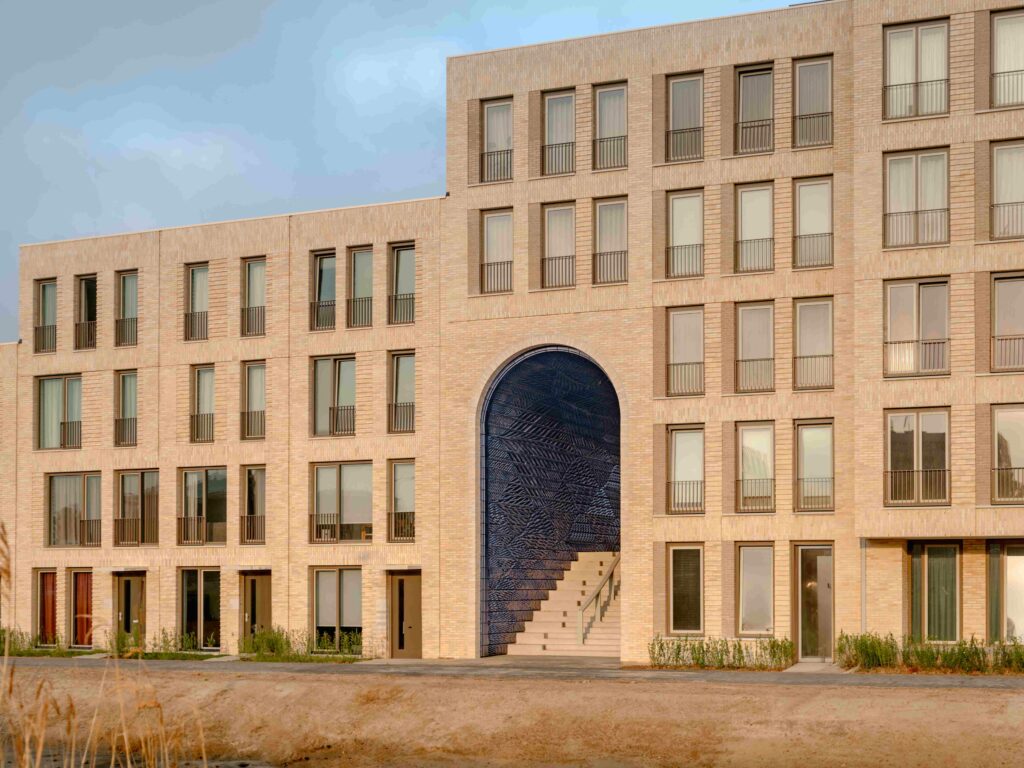
The design
The lush communal courtyard of the PoortMeesters residential building block, which is part of the large-scale urban redevelopment of Nieuw Delft, is framed by two large entry gates. The gates, roughly four metres wide, eight metres high, and twelve metres deep, cover a large public staircase. These gates refer to Delft as a mediaeval trading city with its many city gates and provide passers-by with a glimpse of the idyllic life going on inside.
The New Delft Blue gates take their inspiration from traditional Delft Blue porcelain plates. The design vocabulary of these plates has changed radically over the centuries, from copying Chinese and Japanese Oriental designs to making contemporary Dutch designs. The differentiation between a decorative, nature-inspired frame and an idyllic scene, however, has been a recurring trait. As such, this division is the starting point for the New Delft Blue design, where the idyllic scene is the ever-changing courtyard life, while the gates stand as a three-dimensional frame with algorithmically-designed, nature-inspired patterns that guide people from the public space to the semi-public courtyard.
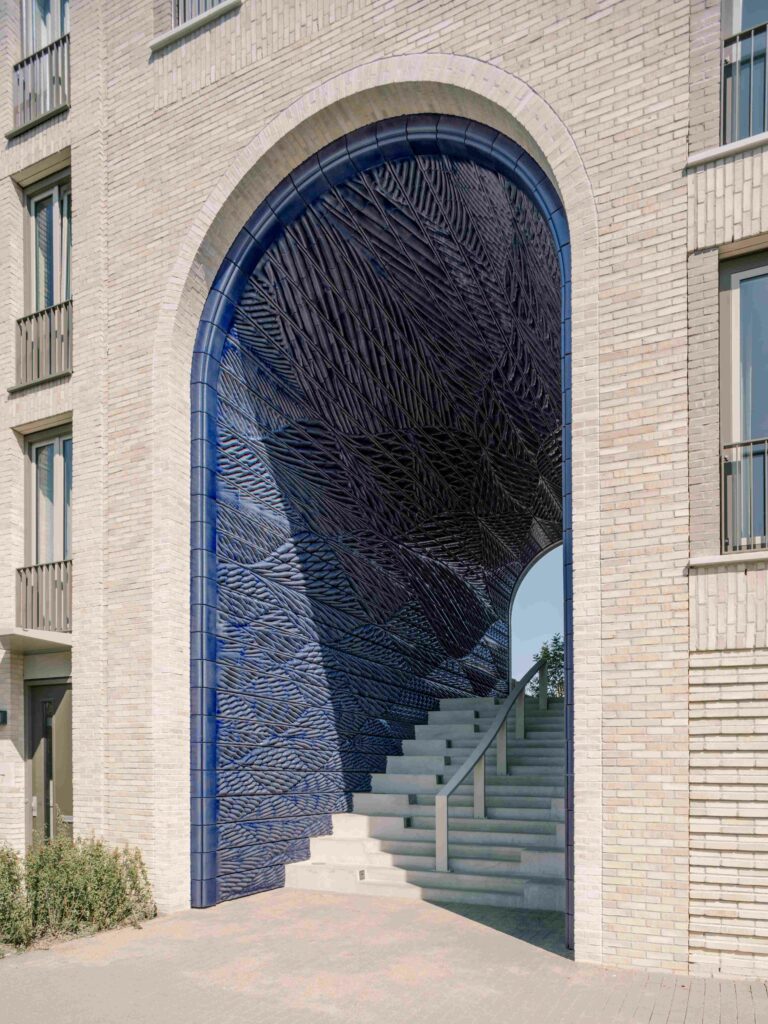

The innovation
The approximately 3000 unique ceramic tiles that cover the two gates are 3D printed, allowing for the creation of contemporary ceramics that are both rich and unique. Using an algorithmic approach to 3D pattern design, certain manufacturing constraints—maximum overhang, width, height and depth, shrinkage, and internal support structure—were taken into account when the geometry of the tiles was generated.
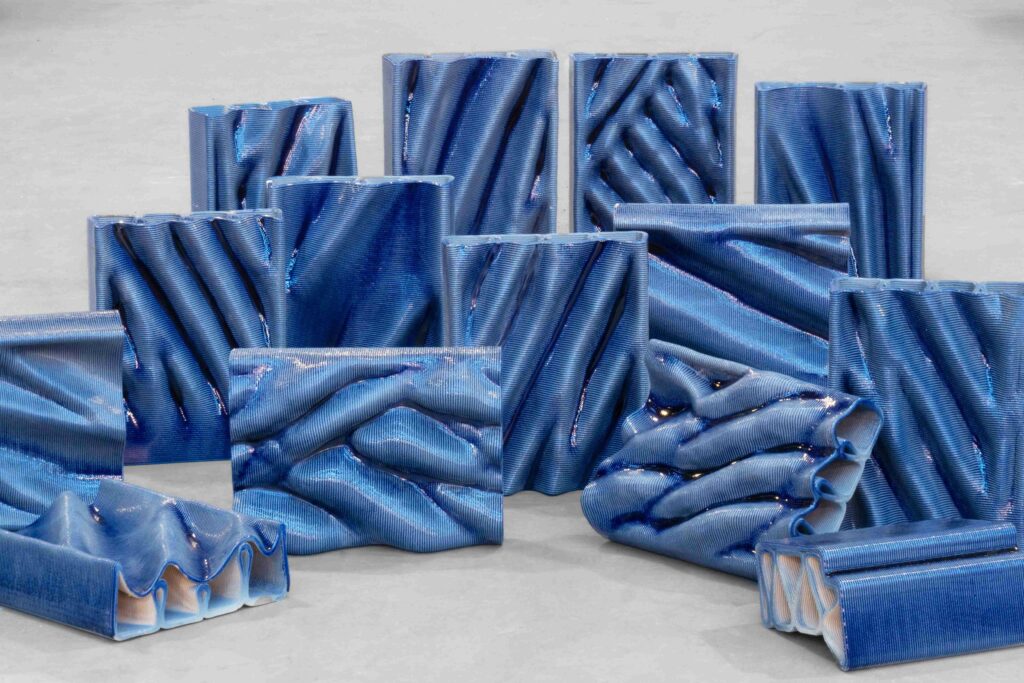
Because the tiles were 3D printed, applying variations to their shapes allowed for poetic ways of ‘painting with shapes’. This is done by applying a transparent blue runny glaze that creates a light blue colour on the convex portions of the tiles (the hills), while allowing for deep blue glaze pools in the concave (valley) areas of the tiles, creating smooth transitions between the hues of blue. The deep blue colour reflects the connection to Delft Blue porcelain and the surrounding canals, and it provides a pleasing contrast to the earth-toned brickwork of the building
Combining this all together, the project embodies the unique identity of Delft in a contemporary way, referring to its history with its algorithmically designed, nature-inspired patterns in blue and referring to Delft of today as the city of knowledge using cutting-edge design and 3D printing technology.

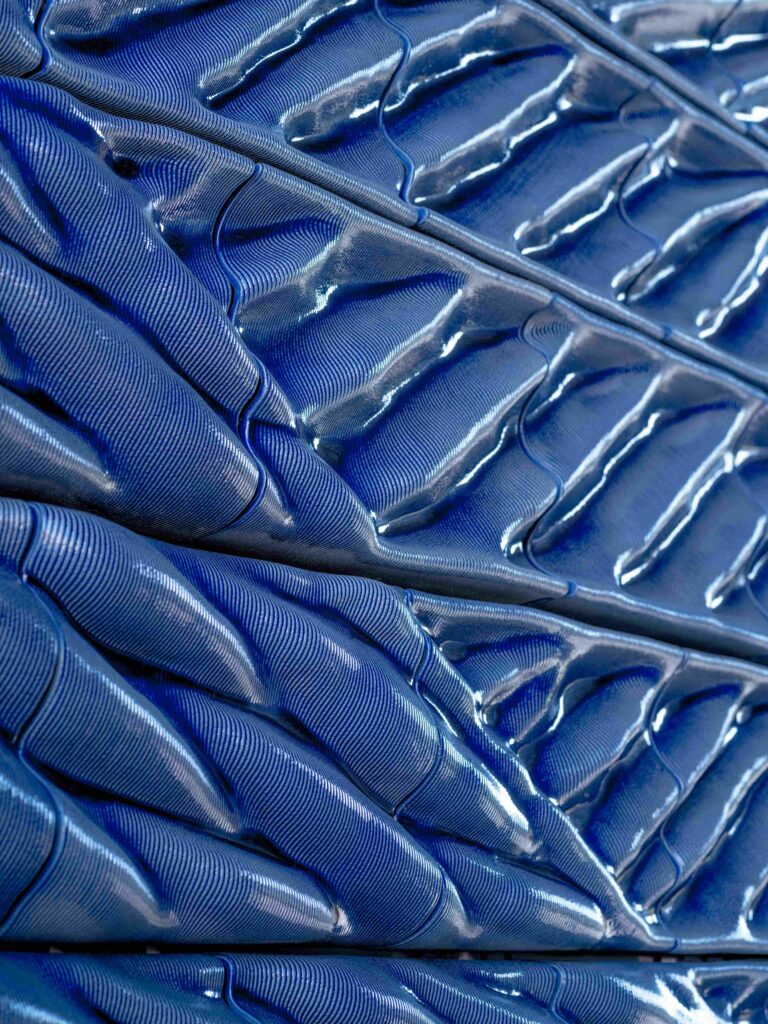
The approach of Studio RAP
Studio RAP aspires to reclaim the architect’s significant role in the built environment’s design and realisation process. To demonstrate that a more prominent role in the design and realisation of a building process could work, they took matters into their own hands with new entrepreneurship, combining architectural design, digital fabrication, and contracting. This came with a new architectural language, one that is expressive as much as it is contemporary and that breathes digital craftsmanship.
They aspire to bring custom-made ornamentation back into architecture by combining cutting-edge digital design and fabrication technology. New Delft Blue strives to enrich the world with a new architectural language that breaks barriers by innovating how the world is envisioned, built, and experienced, making it more exciting and diverse.









